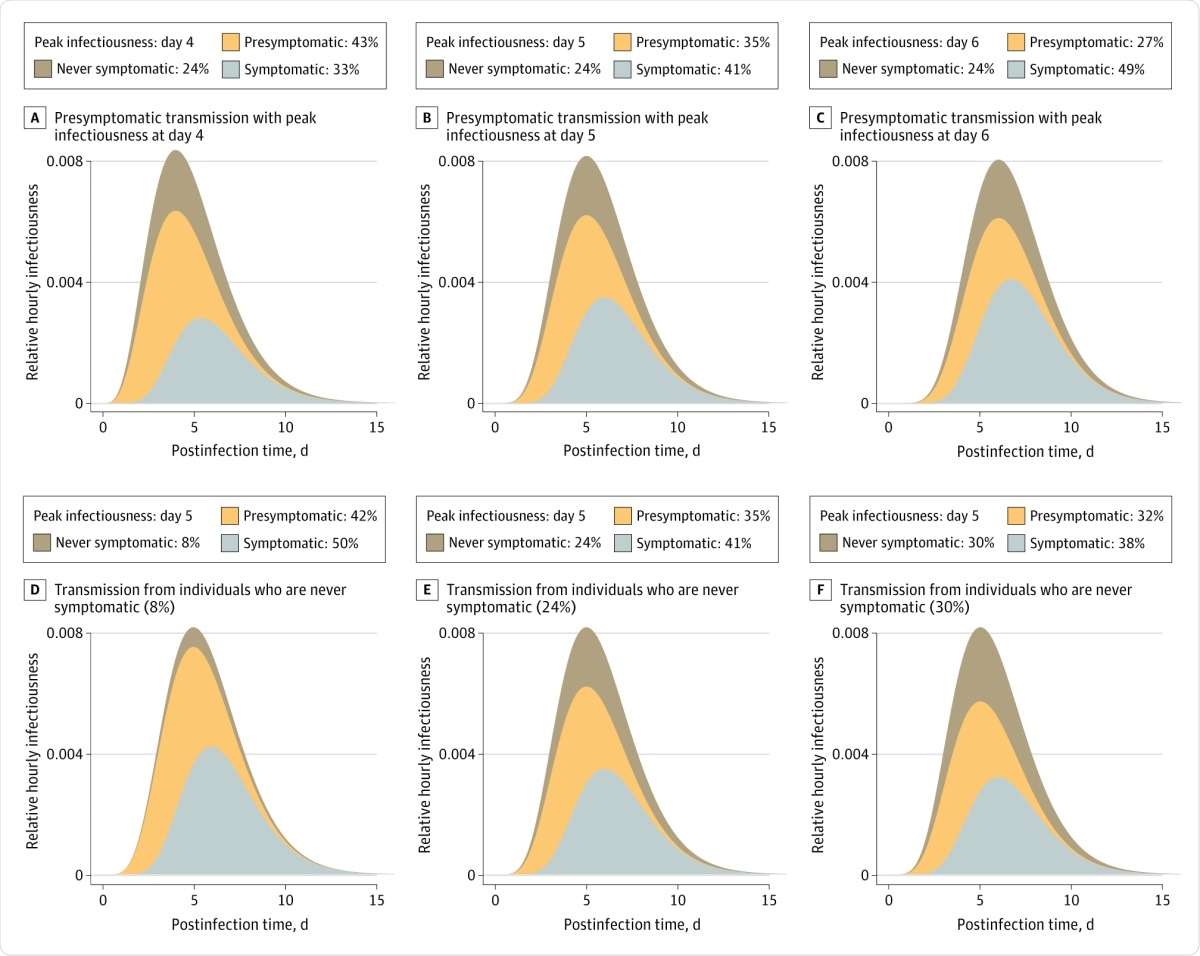More than a year into the coronavirus disease 2019 (COVID-19) pandemic, caused by the severe acute respiratory syndrome coronavirus 2 (SARS-CoV-2), the number of cases continues to rise. To date, over 90.26 million cases have been confirmed worldwide.
.jpg)
The number includes people who never display symptoms (asymptomatic) and those whose symptoms had not started yet (presymptomatic), highlighting the need for people, regardless of whether they feel ill or well, to wear a mask, wash their hands, and stay socially distant from others. This could help reduce the risk of transmitting the virus, which has killed over 1.93 million across the globe.
Level of SARS-CoV-2 transmission
The study, published in the journal JAMA Network Open, aimed to determine the level of transmission of SARS-CoV-2 from presymptomatic, asymptomatic, and symptomatic individuals.
The team wanted to assess the proportion of SARS-CoV-2 transmissions in the community that likely happens from persons without symptoms. To arrive at the study findings, the researchers conducted meta-analyses using data from eight studies from China to set the incubation period at a median of five days, with 95 percent of symptomatic individuals developing symptoms by the 12th day.
The study explored the relative amount of transmission from presymptomatic, never symptomatic, and symptomatic patients across a broad range of scenarios wherein the proportion of transmission from asymptomatic patients and the infectious period were varied according to published best estimates.
Hence, the team maintained the infectious period duration at 10 days ad peak infectiousness was from 3 to 7 days. Overall, approximately 59 percent of all infections came from the asymptomatic transmission, 35 percent from presymptomatic people, and 24 percent from those who are never symptomatic.
However, when maintaining the 24 percent of transmission from people who had never developed symptoms, but shifting peak infectiousness one day earlier to day 4, it increased the presymptomatic transmission to 43 percent and all asymptomatic transmission to a staggering 67 percent.
Meanwhile, increasing the peak of infectiousness to 6 days decreased the presymptomatic transmission to 27 percent and all asymptomatic transmission to 51 percent.

The top curve in each panel represents the average relative hourly infectiousness, such that while the lower curves change under different assumptions, the total hourly infectiousness equals 1 in all cases. Within each curve, the colored area indicates the proportion of transmission from each class of individuals. The portion attributed to individuals with symptoms (light blue) can also be interpreted as the maximum proportion of transmission that can be controlled by immediate isolation of all symptomatic cases. Panels A, B, and C show different levels of presymptomatic transmission. We calibrated infectiousness to peak at day 4 (A), 5 (B; median incubation period), or 6 (C) days. Panels D, E, and F show different proportions of transmission from individuals who are never symptomatic: 8% (C; eg, 10% never symptomatic and 75% relative infectivity), 24% (D; baseline, 30% never symptomatic and 75% relative infectivity), and 30% (E; eg, 30% never symptomatic and 100% relative infectivity).
Infection control measures
The study results echo prior findings that have accounted for asymptomatic transmission in the spread of SARS-CoV-2.
“The findings presented here complement an earlier assessment21 and reinforce the importance of asymptomatic transmission: across a range of plausible scenarios, at least 50% of transmission was estimated to have occurred from persons without symptoms,” the researchers explained in the study.
The findings are important for governments and health experts to formulate mitigation measures that may help contain the virus spread. In the absence of effective and widespread use of treatments and vaccines, these findings suggest that identification and isolation of symptomatic cases are insufficient in managing the pandemic.
Since the study findings show that asymptomatic spread accounts for more than half of all COVID-19 cases, effective control also needs to reduce the risk of transmission from people with infection but do not develop symptoms.
Infection control measures that health agencies recommend – including wearing of face masks, social distancing, and regular hand hygiene – can help reduce transmission. These measures should also be practiced even by people who are not ill. Testing of potential contacts of cases can also help in tracking those who may have been exposed to the virus.
Multiple measures that effectively address transmission risk in the absence of symptoms are imperative to control SARS-CoV-2,” the team added.
COVID-19 by the numbers
The coronavirus pandemic is far from over. As the winter season peaks in the Northern Hemisphere, most countries are expected to report surging infection cases. The United States and the United Kingdom have reported a second wave of the pandemic, with more than 22.40 million and 3 million cases, respectively.
India, Brazil, Russia, France, Turkey, Italy, and Spain report skyrocketing cases. India has more than 10.46 million cases, followed by Brazil, with more than 8.10 million COVID-19 cases.
In terms of deaths, the U.S. has the highest death toll, reaching 374,000, followed by Brazil, India, and Mexico, with more than 203,000, 151,000, and 133,000 deaths, respectively.
Source:
Journal reference: